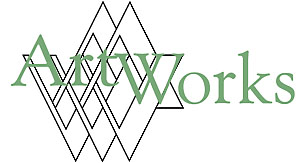
 |
Summer 2002 |
|
•Radio series offers •The Griffin & the Minor Canon •How can I help students in my |
The creative mentorBy Belinda Anderson Imagine having the freedom to go wherever a whim takes you and do anything your mind can conjure. That’s the joy of mentoring. Anyone who wants to make a difference in a child’s life can be a mentor. The primary requirement is an investment of time. But artists bring a dimension of resourcefulness that enriches the mentoring relationship. Sculptors, painters, singers, writers — artists of all types can apply their imaginations to mentoring, with results that help both themselves and the children grow creatively. For the past three years, I mentored two little girls as a volunteer through WE CAN, a program of the Children’s Home Society of West Virginia. The program pays for my vehicle mileage and, within a budget, activities for the children. (Volunteers pay their own way to the movies, for instance, but the program pays for the children’s tickets and snacks.) Because of this program, these little girls learned to make candles. They painted bisque ware and threw pots on a potter’s wheel, reveling in the power of making their own creative choices. I’ll always remember how eager one of the girls, seven years old at the time, was to wet her hands and begin shaping the whirling material that she called “magic clay.” They saw a Russian ballet roupe perform The Nutcracker. They explored the spooky depths of Lost World Caverns and Organ Cave. In The Artist’s Way, Julia Cameron emphasizes the importance of the artist date, a block of time set aside to nurture one’s creative consciousness. “Your artist is a child,” she writes. “We forget that the imagination-at-play is at the heart of all good work.” Mentoring is like an artist’s date. Because of this program, I got to create tiles from clay. I was right in the middle of a gaggle of little girls in a crafts classroom, making beeswax candles. I got to play tourist at home, experiencing the local caverns through the perspective of two entranced children. “Feel this dirt,” one of them told me, scooping up a handful from the cavern floor. “It’s different.” She was right — it was soft and fine, like talcum powder. (I ended up writing feature articles for Wonderful West Virginia as a result of visiting those caverns.) One of our favorite activities was to commandeer a table at a coffee and tea shop. I’d open my ever-present tote bag, and out would spill magic markers, paper, card games and other little items. All three of us would become absorbed. For that time there was no other world — no school hassles for them, no desk chaos for me. Mentoring outings don’t have to be expensive. A nature walk became a game for them and an artist date for me as we closed our eyes and listened to the sounds of the forest. “I hear the pine cones,“ said one of the girls, six at the time. Often, the girls elected to go to a park or to return to their school playground. Just having someone applaud their progress all the way across the monkey bars can be a great boost to kids. Undivided attention is one of the best gifts an adult can give to a child. My little friends recently “graduated” from the program. We had some challenging times — days when things hadn’t gone well at school, at home, or with each other — but we had mostly good times. And some moments were just extraordinary, like the day they were first given the chance to buy books of their own. “I‘ve never been to a book store,” one of them told me. Thanks to these girls, I’ve learned a lot, too. I am better informed about skipping stones, and now I know how to hunt crawdads. Then there were the great lines they dropped, little gems for me to catch and treasure: We have three banty roosters, but two of them are hens.” Once, at an art exhibition, the nine-year-old examined an untitled piece of Shona tribal art and said, “I can title that: Upside Down Man Hugging Bull.” I’ve just met my new match, a 13-year-old girl. At first, all she would tell me about herself was that she didn’t like school, but she liked animals and playing basketball. She learned that I wrote and taught for a living. Then we discovered we both liked nature and Disney movies. On the drive into town, she revealed that she liked to draw, and asked if we could do arts and crafts. Then she queried me about the writing business, saying she’d like to write a children’s book. Always alert for an opportunity to encourage a budding writer, I ushered her into a bookstore and bought her a journal and book. Next, we stopped by the pottery shop, where she glowed with enthusiasm at the prospect of spending part of her summer making mosaic-bordered mirrors and working a potter’s wheel. She wanted me to show her the library, where she procured her first library card and promptly checked out two books. Picking up a postcard announcing an art exhibit, she asked if we could go there one day. Sure, I said. As we dined at Burger King, I pulled out “Table Talk,” a deck of cards with conversation starters. “If you could be someone else for a week, whom would you select?” one card asked. “What would you hope to learn from the experience?” “I’d want to be you,” said this girl who had known me only a few hours, “so I could write and teach and help people.” Belinda Anderson is a writer whose work is profiled elsewhere in this issue. Contact Anderson by e-mail at [email protected]. |